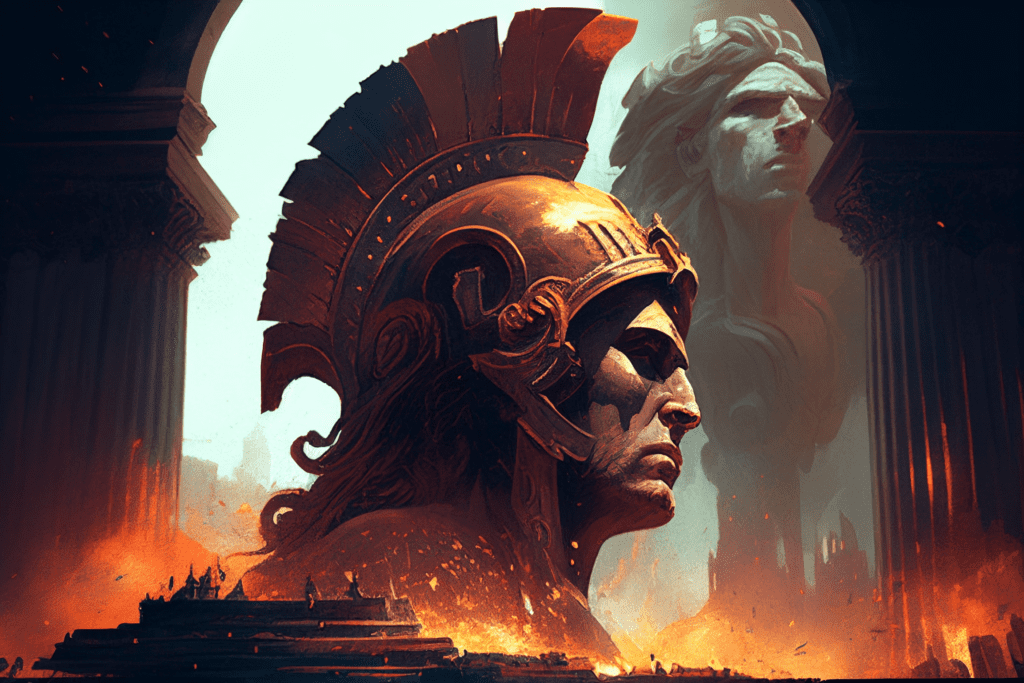
The previous article discussed the properties of good money. In this article, we’ll explore the dangers of violating the property of scarcity of a monetary good. We examine historical examples of currencies that were subjected to such a practice and the devastating consequences that followed. From hyperinflation and economic collapse to social unrest and political instability, the impact of a seemingly unlimited money supply has been felt far and wide.
The price of something depends on how much people want it (demand) and how much of it there is (supply).1 An increase in supply is good for all goods other than a monetary good.2 For example, an increase in the supply of bananas will result in fewer dollars per banana. An increase in the supply of cars results in fewer dollars per car. This is good. It makes these products more accessible to the population and increases the overall standard of living.
Contrary to this, an increase in the supply of a monetary good results in a decrease in the value of money (relative to all other goods).2 If the number of dollars increased, you’d get fewer bananas per dollar. You would also get fewer cars per dollar. In fact, you would get less of everything per dollar. This phenomenon is known as inflation. The only reasonable cause for this is an increase in the monetary supply.3 We’ll go through the rationale behind this in the Austrian Economics series.
Rai Stones

Rai stones, a form of primitive money used on the Island of Yap, were one of the closest systems to Bitcoin in the physical space. These large heavy stones were mined from a quarry on another island, Pilou, which was approximately 400km away from the Island of Yap. The process of acquiring Rai stones was a labour-intensive task that required hundreds of people to transport and cut. Once acquired, the large heavy stones were placed in the centre of the town for everyone to see.2
The Islanders had a unique way of recognising ownership of the stones. They were too heavy to physically transport. When transferring stones to another party, the stones would not move, but the sender would announce to the whole town that he is giving a certain stone to the recipient. The whole township would recognise the transfer of ownership. If anyone attempted to wrongfully claim a stone was theirs, the whole town would reject that claim and only accept the stone as payment from the rightful individual.2 We’ll explain how a similar decentralised system is achieved with Bitcoin in the Bitcoin Anatomy series.
In 1871, Captain David O’keefe became stranded on the island and was revived by the people of Yap. He saw an opportunity to get coconuts from the island and sell them to producers of coconut oil. Unfortunately, he had no means to entice the locals to work for him as they did not recognise his currency. He took note of the Rai Stones being used as money.2
After being rescued, he sailed to Hong Kong, procured a large boat and explosives, and sailed to Pilou to quarry several large Rai stones to be utilised as payment for the locals. Contrary to what he expected, the village chief banned people from using these newly acquired stones and banned locals from working for Captain O’keefe. The village chief said the stones were acquired too easily, and only stones achieved through sweat and hard labour were valid stones on Yap. Some locals disagreed, and this led to conflict on the island. Eventually, some islanders agreed to work for the Captains Rai Stones. However, the supply of Rai stones drastically increased. As a result, the value of all stones in the small economy decreased substantially.2
West African Aggry Beads

Aggry beads were considered precious in certain areas of West Africa where glass-making technology was either energy-intensive or not common. European settlers noticed that these beads were being used as money. They produced glass beads with far more ease in European factories, which they then shipped to Africa.2
With the gift of easy money, Europeans slowly bought up most properties and agricultural land. Flooding the market with Aggry beads simultaneously increased the price burden on the local population. Because it was a larger region, the process of devaluation of the Aggry beads was slower, but the consequences were more significant. This resulted in the transference of wealth from Africans to Europeans, impoverishing them. For basic needs such as food and shelter, many resorted to giving themselves or other family members to slavery in order to survive, hence their alternative name “slave-beads”.2
The use of Aggry beads as a form of currency helped the Europeans to maintain control over the African economy and exploit the people for their labour. Over 12 million slaves were shipped from the West African shores to the rest of the world (the transatlantic slave trade). Over 2 million died on the journey alone. The tragic irony was that slaves were transported away on the very ships that imported the European glass beads responsible for their enslavement.2
The Decline of The Roman Empire

Julius Caesar created the Aureus coin in 14-37 AD. This coin was made of 8g of gold, a metal that had a very low rate of supply increase. Mining gold is very labour-intensive and has an inflation rate of about 1.5-2% per year. The economic stability that resulted from its use lasted for 75 years.2
In 68 AD, Nero introduced the practice of coin clipping. This involved taking a small amount of gold from each coin, which increased the number of coins in circulation but reduced the amount of gold in each one. By 285 AD, the weight of the Aureus coin had been reduced from 8g to 5.5g of gold. The increase in the supply of coins led to an increase in prices, and eventually, people became angry about the rising cost of goods.2
To appease their citizens, emperors were forced to keep prices low. They would do this by paying merchants the market price and then selling it under market price for their citizens. At one point bread was given out for free. As you can imagine, this was not sustainable by regular means. The only way for a treasury to do this was to accelerate the practice of coin clipping to bolster its own finances or acquire it from an already angry mob of citizens by way of increasing taxation. The latter was an unpopular choice.2
Further coin clipping led to an increase in the monetary supply and predictability, resulting in higher prices. This cycle of price rises, popular anger, price controls, and coin debasement continued. In the end, the debasement of the Aureus coin contributed to the collapse of the Roman Empire. The expanse of Rome’s territory was too great for a collapsing economy to support.2
Getting Something for Nothing

A key theme that emerges from these historical events is that when a small group of people can create new units of money at little to no cost compared to other market participants, it results in an unfair advantage. This act provides increased purchasing power to the small group while simultaneously reducing the purchasing power of the larger population, essentially resulting in a transfer of wealth. You begin to understand Bitcoin when you realise that slavery was never about owning a person but owning the fruits of their labour.
This pattern is not limited to historical events but can also be seen in the modern-day. For example, when governments engage in the creation of money through quantitative easing, it increases the supply of dollars, leading to inflation. When you witness prices of everything rise relative to the dollar, it’s more accurate to say the dollar has fallen relative to everything else.
Governments then use this newfound wealth, at the expense of those holding the now depreciating dollars, to solve the problems that quantitative easing itself created such as widening inequality and rising prices. An unfortunate cycle that has repeated throughout history, that eventually led to the suffering of many. It is a short experiment in the history of money where gold had dominated for over 5000 years. It is an experiment that will likely not end well. The average life span of a fiat currency over the last century is 27 years.4 We’ll discuss how we went from a tried and tested money such as gold to the US dollar becoming the global reserve currency in the next series “The Gold Standard“.
The Bitcoin Standard

On a Bitcoin standard, money cannot be acquired without work. It must either be acquired by selling goods and services that took effort to produce, or mined using energy intensive computation.2 It has rules without rulers. It is a game by which these rules must be adhered to no matter who you are. The Bitcoin protocol is indifferent to whether you are a third world clay pot seller in an isolated bazaar or the most powerful government in the world. Bitcoin presents a paradigm shift that offers the potential for a more equitable future for all.
References
- Alberta Government. How demand and supply determine market price. Available from: https://www.alberta.ca/how-demand-and-supply-determine-market-price.aspx.
- Ammous, S. (2018). The Bitcoin Standard: The Decentralized Alternative to Central Banking. John Wiley & Sons.
- What Has Government Done to Our Money? Mises Institute, 1990. Available at: https://mises.org/what-has-government-done-our-money.
Monetary Gold. Global Reserve Fiat Currencies. Available: https://www.monetarygold.com/global-reserve-fiat-currencies/#:~:text=Global%20reserve%20currencies%20have%20historically,a%20fiat%20global%20reserve%20currency.
These articles were designed to make these concepts more palatable. If you’re interested in reading a more in-depth perspective on the concept of money, consider the following:
Robert Breedlove, “Money, Bitcoin and Time“
Saifedean Ammous, “The Bitcoin Standard: A Decentralised Alternative to Central Banking”. Wiley, 2018
Vijay Boyapati, “The Bullish Case for Bitcoin”
Robert Breedlove, “Masters and Slaves of Money“
Nick Szabo, “Shelling Out: The Origins of Money“

Ruki is a passionate Bitcoin educator who firmly believes in the principles of the Austrian School of Economics. As a sound money advocate he recognises its benefits to individuals and society as a whole. He is dedicated to empowering those without financial access to take control and build a more secure future.
